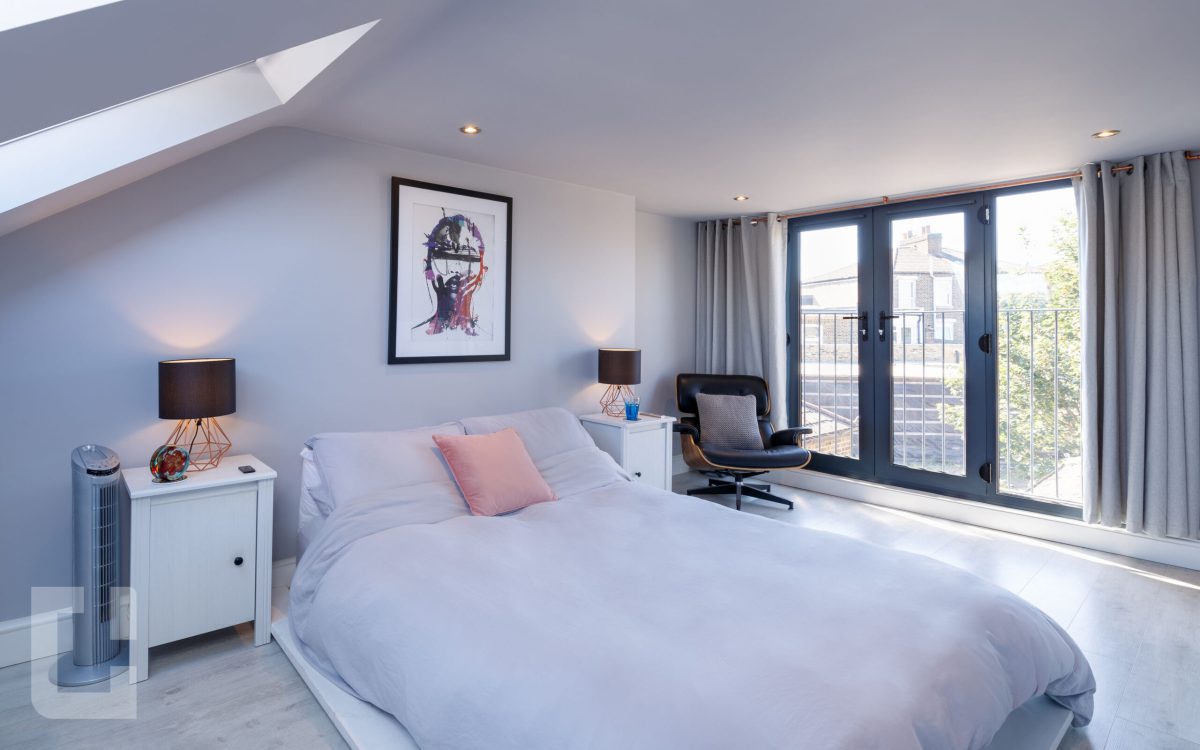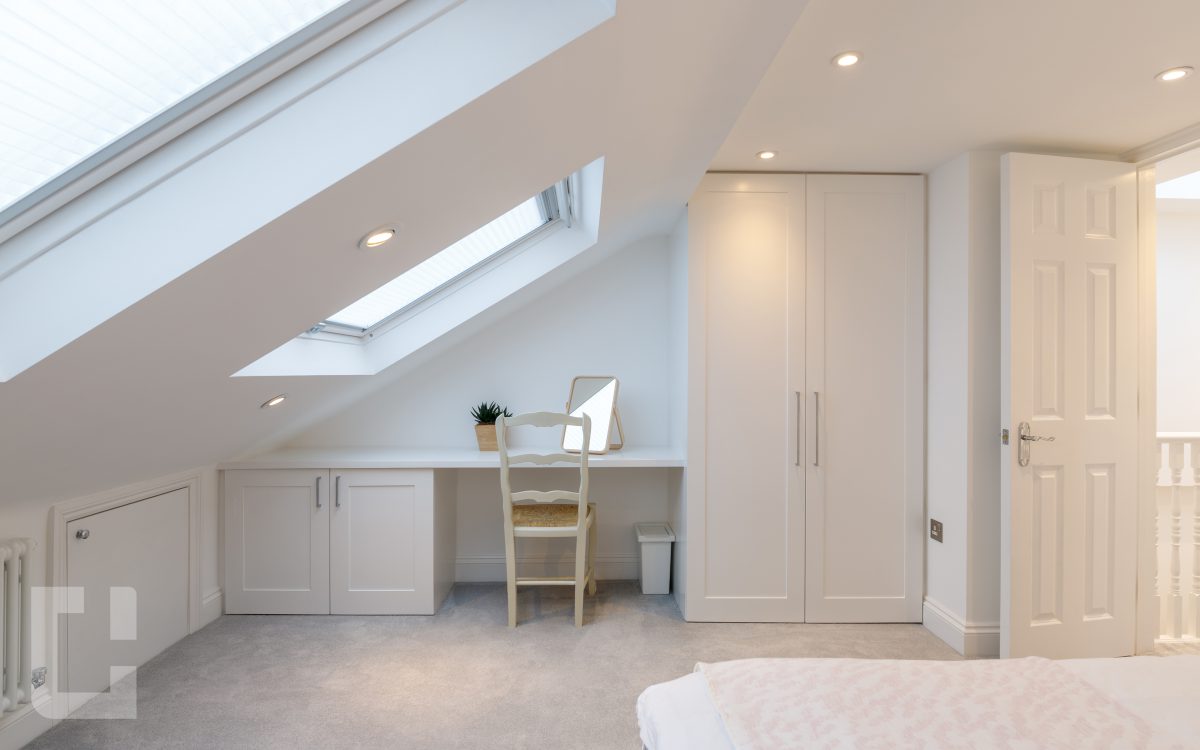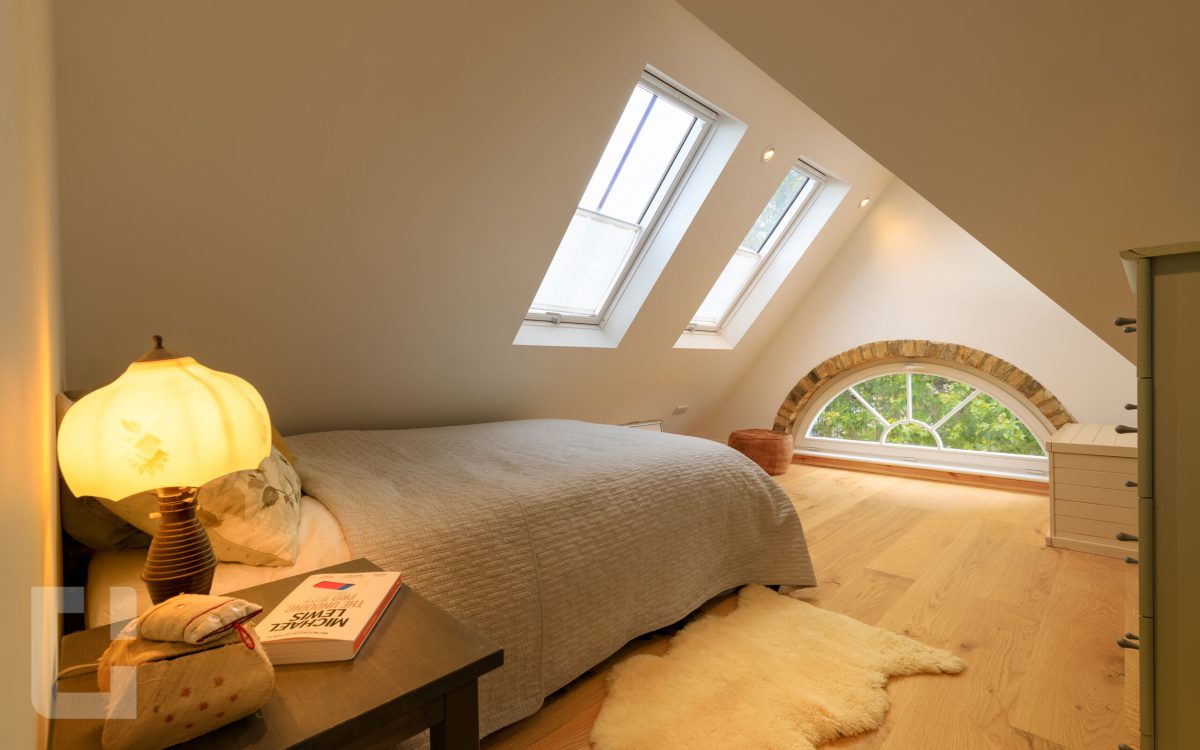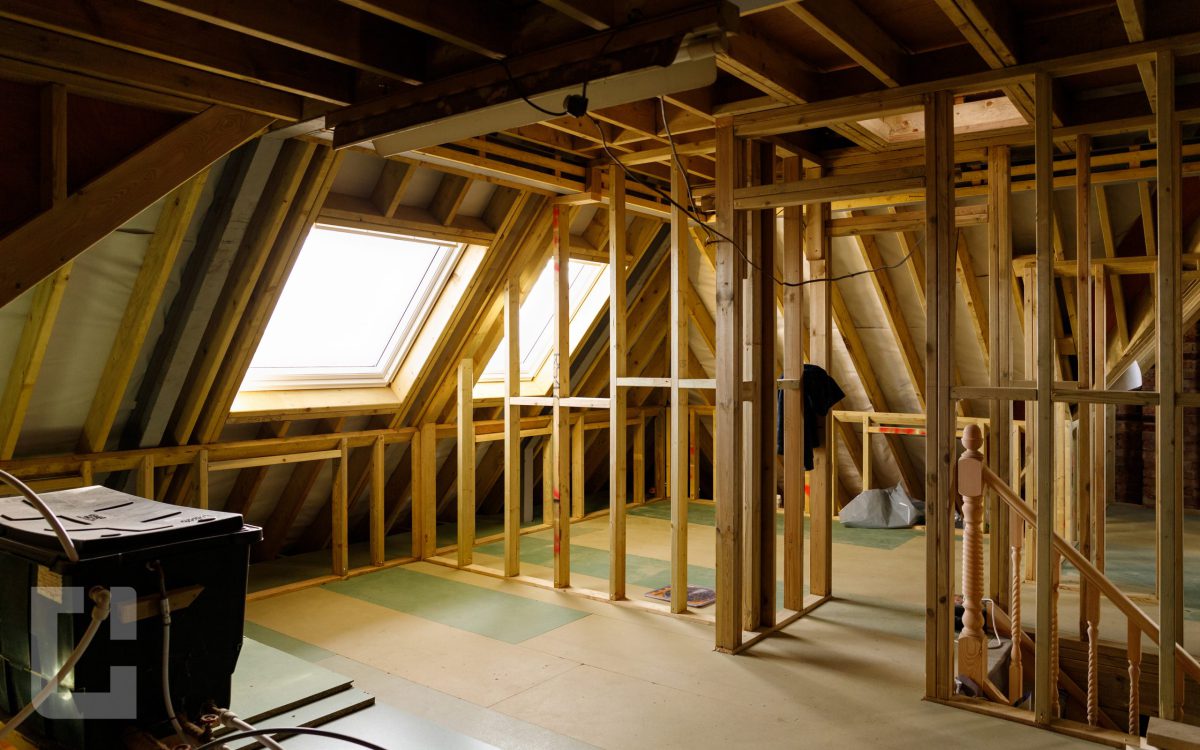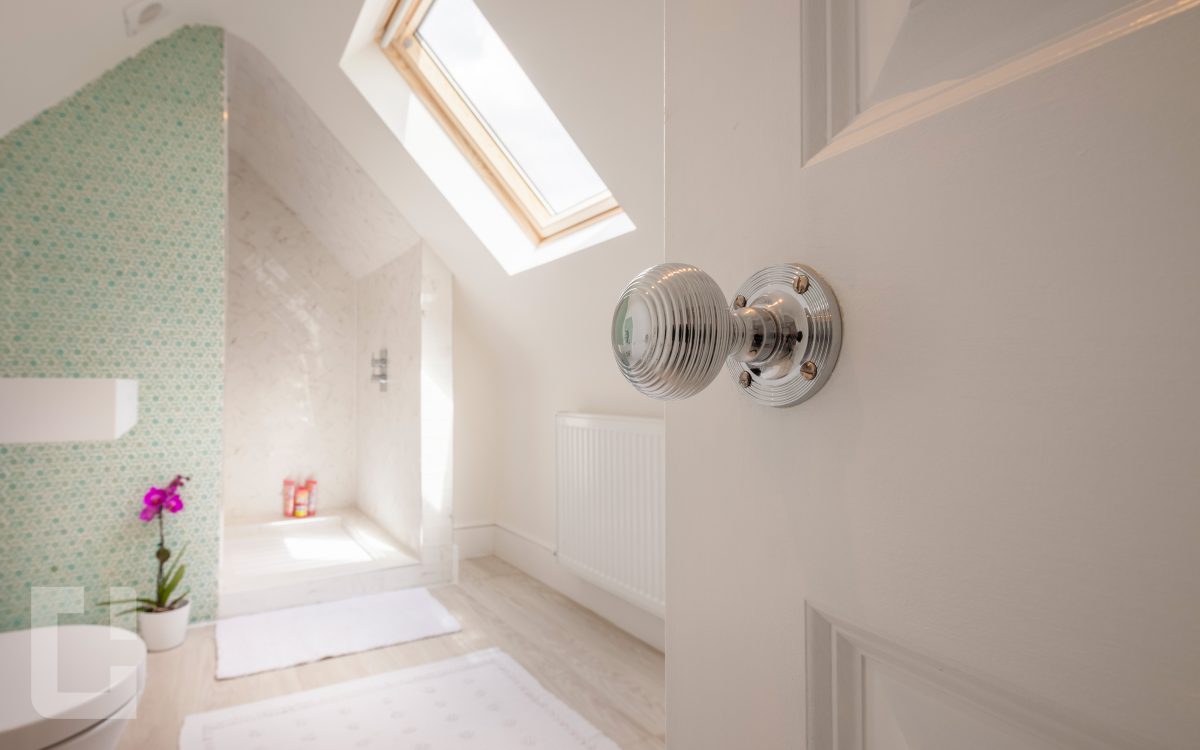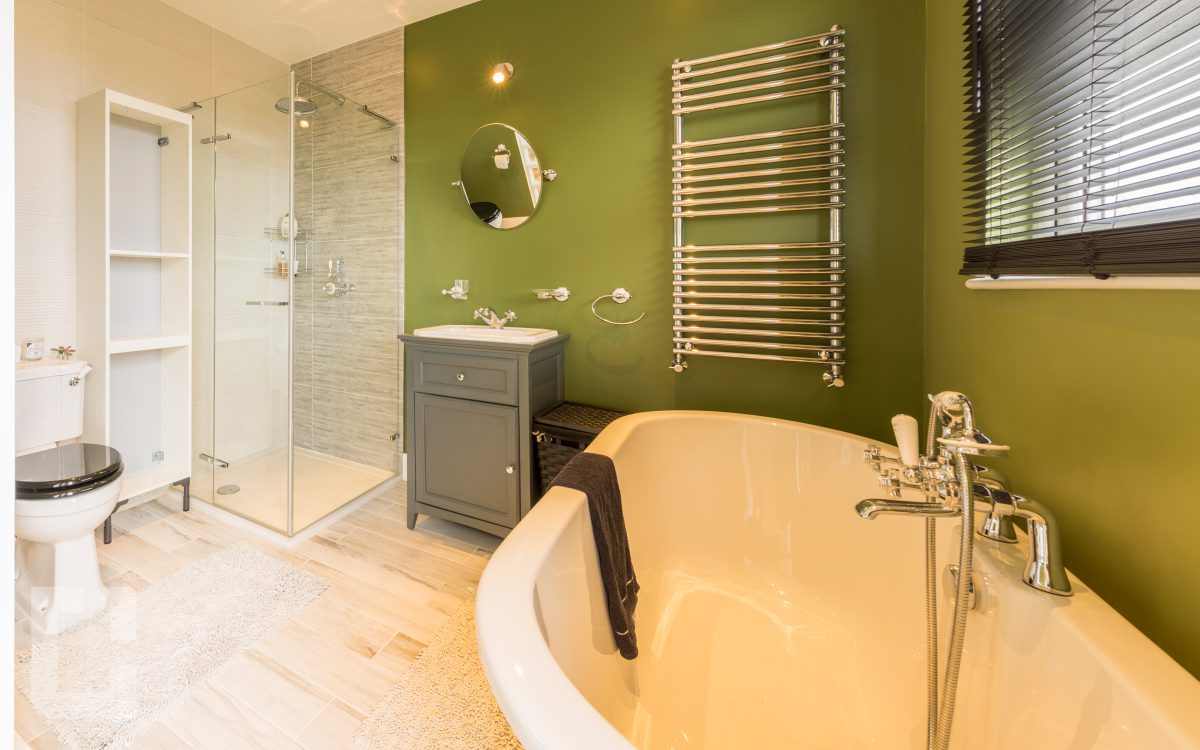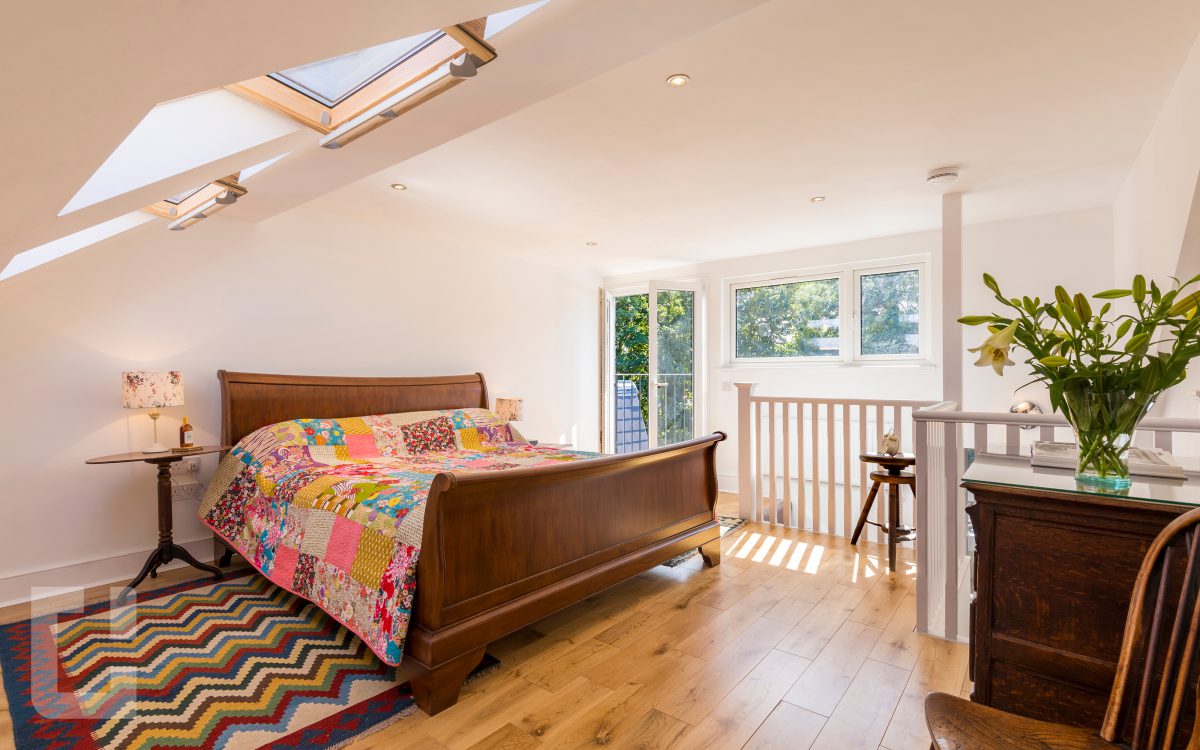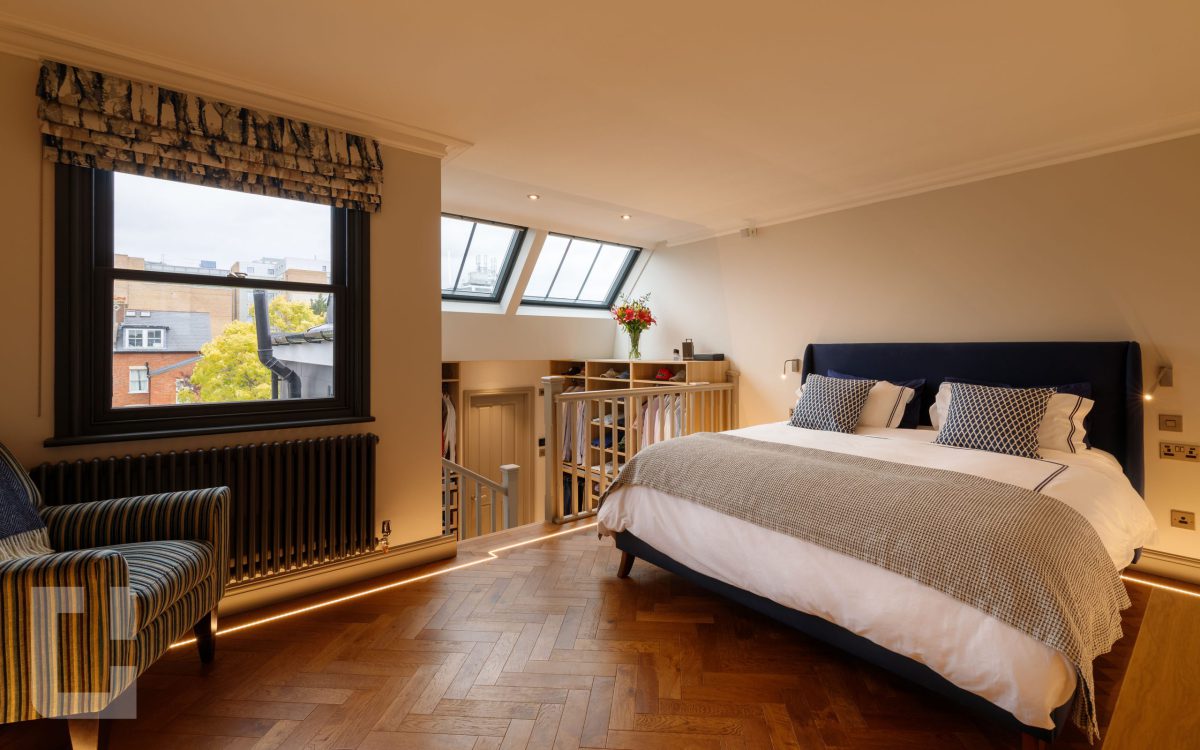The Ultimate Loft Conversion Guide
If you’re embarking on a loft conversion or extension, it can certainly be overwhelming. So we’ve produced a guide to help.
A loft extension or conversion is likely to be one of the biggest decisions you’ll make on your property – aside from actually moving house. However, having the reassurance that you’re instructing a professional company that has your needs in mind will put your mind at rest. For over three decades, we’ve been helping our clients to make more space out of their existing properties in London and the M25.
Even before you start planning your new loft conversion, you’ll need to take certain factors into consideration. First of all, is the space big enough? It’ll need to be a minimum height of 2.2m-2.4m, or if a modern roof with trusses, between 2.4m-2.6m. Check if there are any chimneys or lifts in the space. Other facts to consider are whether the roof is felted, and most importantly, what you’ll actually gain from the conversion.
Just as properties come in all shapes and sizes, there are many different types of lofts to choose from. Whether you have a standard ‘two up two down’, a London Victorian property or something else, there will be positives and negatives for them. Most properties will choose a dormer loft conversion which means that the roof isn’t replaced or removed; you’re just adding on to the existing roof site.
For this style of loft conversion, this is where a loft conversion that is the full width of your roof is added. Perhaps you’re looking for a room away from the rest of the house.This style is an excellent option if you are considering adding a beautiful new master bedroom suite in your loft area, or perhaps even a stunning living area to enjoy. You will gain ample living space from this loft conversion.
For this type of loft conversion, this is where the hips, or where the roof’s sloped edges are adapted to form a gable wall. An excellent choice if you’re looking for additional headspace for your home, it’ll mean that you gain much more living space in your home too. Ideal if you’re looking for a new bedroom, study, playroom or additional living area.
These only suit a particular style of property such as Victorian homes and corner terraced properties. This is where the extension is added to the rear of your home. You’ll certainly gain the most space from this style of loft conversion – many homes choose to add separate rooms with this style. For example, a bedroom with an ensuite bathroom.
If you’re concerned about headroom, a mansard is an excellent option for you to choose. Here, you’ll have to remove one side of your roof which will be costly. The mansard conversion means that the slope on the roof will be at least 72 degrees. Although you will need to have planning permission for this style, you will certainly gain extra headspace from your new loft area.
These styles of loft conversions have become increasingly popular in modern builds, even though they were originally seen in the 16th century. By adding a single dormer, you’ll gain two particular benefits – more space in your loft, but also a lot more light. If your property is in a conservation area, you’ll most likely be accepted for planning permission if the build is kept to the style of the current property.
If you are contemplating having a loft conversion or loft extension, you’ll need to be aware that the roof structure will have to change considerably in order to give you the space you desire. This also means that the floor of the roof will need to be strengthened in order to take the weight of the new structure.
The original roof design used purlins and rafters to create support to the structure, which do not affect a loft conversion. However, if the struts and purlins are removed, this will mean that the support will no longer be there in your roof. Frequently, modern manufactured timber or steel supports will be used in their place, and these will ensure that the roof structure does not sag.
If your property was built after the 1970s, it will likely to have been built with trussed rafters, which are particularly challenging to the build. It will also need advice from a structural engineer prior to starting a loft conversion process. Often the trusses are removed; being replaced by rafters made out of manufactured timber or steel. This means that you’ll then have new living space in your loft.
As no two loft extensions are the same, we don’t have a set price for our loft conversions. We’ll provide with you with a price based on everything that is needed. However read on for some outline costs of what you can expect. An important point when considering your new loft build is that it will add value to your property, which, depending on the size of your loft, could potentially add 20% to the value.
There are many factors that need to be considered. These include the size of your current loft, the type of property you have, where the property is situated, and the amount of rooms. We’ll need to look at whether you’ll need building regulations. After the structure is built, we’ll also need to look at what you’ll need in terms of plumbing, electrics, and finishing touches in the form of fixtures and fittings.
Based on a similar project in Cockfosters, this project would cost between £32,000-£38,000.
Based on a similar project in Thorold Road, this project would cost between £44,000-£51,000.
Based on a similar project in East Barnet, this project would cost between £40,000-£47,000.
Just to give you an idea, here are some guide prices for loft conversions in London. These will vary depending on the type of project and the costs that will be incurred through the roof changes:
As a guide, here are our prices for loft conversion planning services:
After the structural works, it’s time to consider the four Fs: fittings, finishing details, fixtures, and furniture. When you’re thinking about the final cost of your loft conversion, it all will depend on how much your budget is and what you are willing to pay. You may also have decided to complete some of the work yourself; reducing your bill. Here is a guide to some of the costs that may be involved:
When you decide on a loft conversion, it can be a pretty tricky decision to make. The most important choice you’ll need to make will be who to choose to create the loft conversion or loft extension of your dreams. There are so many different companies – how do you choose? Although we’d love it if you chose us, we’ve pulled together some important points that you should bear in mind when you instruct a supplier.
Recommendations are so important, however there are lots of websites that will give you reviews – but you need to ensure they are legitimate. Websites such as Trust a Trader, Rated People, and TrustPilot are good sources of ratings and reviews. You may also see ‘Trust Boxes’ on suppliers’ websites. You could also look at Google Reviews and Facebook to see reviews, although it can be difficult to check whether they are genuine.
Having any work completed on your home is a major investment. So it’s also vital that you check the company you choose is accredited and a member of professional guilds that are focused on delivering high levels of service. We recommend The Federation of Master Builders, which has been representing high levels of building standards for 75 years. The Guild of Master Builders is also a strong source of reputable builders who are committed to excellence.
When you’re planning your new loft space, you might already have ideas of how you’d like it to look. You’ll no doubt want your loft conversion to be individual, which is why you’ll need to choose a supplier that will be able to transform your ideas into reality. Looking at previous projects that they’ve created is a great way to discover new ideas and to see the quality of their work.
It’s essential that you arrange to meet with your chosen supplier before you make your final decision to go ahead. Take the opportunity to talk about what you would like to achieve from your new home space. Find out what ideas that they can suggest and see if they complement yours. Your first consultation should be free, and any loft conversions that demand payment as such are not to be recommended.
In order to get the most of out of your first consultation, here are some points well worth considering:
And of course, personal recommendations are vital, so don’t forget to see what other people’s experiences have been with your chosen supplier.
Once you’ve chosen to go ahead with your loft conversion supplier, there are many things that you’ll need to do in preparation. Here are some queries we’re often asked:
Some of our clients have already instructed their own architect, if this is the case for you, it’s well worth checking with your loft extension company that they’re happy to do so. Most companies will be happy to work alongside your architect, however you may find that some prefer to use all of their own professionals inhouse. This could be due to their own style or if they have they have particular architects that they like to use.
A pretty important question. At the beginning the security-protected scaffolding will be built around the side of your home. You can expect roof work to be completed in around two months. After that the roof will be connected to your home, followed by the stairs that are carefully crafted by us – a further few days. The final fittings and fixtures will take around two weeks, and we make every effort to keep any disruption to a minimum.
It’s certainly polite and highly recommended to make your neighbours aware of your loft conversion plans. We find that there are rarely any issues. Providing you follow all the required rules and regulations, it is unlikely that you will be prevented from going through with your loft conversion. If you have a party wall that affects yours and your neighbours’ properties, this is generally the only point for discussion.
If you’re planning your loft conversion and unsure how best to finance the works, we recommend that you contact your bank or building society. Unfortunately we cannot advise you on how best to raise the finance. Improving your home can be an excellent way to build create a financial investment out of your property, however it’s vital that your financial status is sound before you consider taking out finance.
Some loft conversion companies will be happy to just provide the structural works for you; leaving you to complete the rest of the build. Although this may seem like a cheaper option, it can become more expensive due to electricians, plumbers, decorators, and other professionals that you need to instruct. You will also need to be aware that the loft conversion company will not take responsibility for works not completed by themselves.
If you’re unsure if you need planning permission, it’s worth considering the size of the extension you’re hoping to build. If you’re planning a conversion that’s more than 40 cubic metres (if you have a terraced home) or more than 50 cubic metres (any other property type), you will need planning permission. Although you’re covered by permitted development rights, you’ll need to ensure there haven’t been any previous extensions.
No Need for Planning Permission if:
It’s compulsory to have building regulations approval. This is traditionally carried out through what’s known as a ‘full plans application’. This involves your loft conversion company/designer drawing up detailed plans, completing an application, and paying the appropriate fee. It’s vital that the process is followed strictly as you can lose your fee and work can be delayed. Generally, you’ll wait between 2-3 weeks for a response before the start of building works.
If you have a semi-detached or terraced property, you’ll need to give at least two months’ notice. Should you wish to start sooner, you’ll need to gain approval from your neighbour. You’ll also need to advise them if:
It’s not illegal to start work prior to party wall notification, however your neighbours can request a court injunction to prevent your build if not, which can result in great cost to you. It’s recommended that you make your agreement in writing. If your neighbouring property is empty, you’ll need to confirm notice on the visible part of the building, but you won’t need to notify your local authority.
If you find yourself in a disagreement with your neighbour regarding a party wall, you’ll need to find an ‘agreed surveyor’ to arrange an ‘award’. Created by two separate surveyors, and finalised by a third if needed, it’ll set out the work agreed and when it’ll be done. It’ll also state if any further measures are required to protect the overlapping property. The surveyor will keep in touch to monitor the progress.
When you plan your loft extension, building regulations require that you take into consideration an escape route should a fire occur. This means that you’ll need smoke alarms and fire doors on each floor. You may also need fire protection included in your walls and floors. Open plan areas will also benefit from fire resistant doors, dedicated partitions, and sprinkler systems. You’ll need to plan an ‘escape window’; 1.1m at the highest from ground level, plus windows must have escape hinges.
Three floors means extra safety requirements. Any smoke detection facilities must use the mains power – just in case the batteries run out. You’ll also need to ensure that the stairs are fire protected as they will be the main escape route. Your surveyor will need to work with building regulations to arrange a suitable protected solution which may include a fire escape and/or sprinkler system.
One of the highlights of a loft conversion is adding a luxury bathroom, however you’ll need to check if this is a viable option. Check that the property is stable to take the weight of the sanitary ware, new tiling and any porcelain that you choose. You are likely to need a new brick wall – hidden by plastering or decoration – to protect your property from possible flooding.
Loft extensions can prove rather tricky when it comes to plumbing, which is why expert design, planning, and installation is essential. You may be able to use existing systems, however you may need to add another drainage system in accordance to plumbing regulations and building regulations. This could include a new boiler due to poor pressure. Your loft company will need to check your current boiler to check if it has sufficient pressure.
If you live in a built-up area, you may want your new loft space to be an oasis of calm. By placing acoustic mineral wool between the existing wall and stud wall, in addition to timber battens between the ceiling and floor, this will help to soundproof the space. You should estimate around 4 inches of soundproofing; all sealed with silicon gel. Certainly secondary glazing or specialist windows will help.
Installing soundproofing doors and windows can result in up to a reduction pf 50dB. This will depend on how much soundproofing you’ll need. Although secondary glazing is the most popular option, they limit sill space and are not popular. Plus conservation areas may require specialist windows which can be created by your chosen loft company. Typical costs are:
Standards of insulation have become incredibly strict; even more so than a decade ago. In fact, many current loft conversions and extensions would actually fail today’s inspections when it comes to insulation. Building regulations requirements state that you’ll need either:
There are several ways of insulating your loft in order to keep the heat in while reducing greenhouse emissions; protecting you from increased bills and preventing wasted energy. These include the addition of rigid boards and thermal wool insulation to stud walls, wool insulation interwoven into the joists, and fitting insulation between the roof and ceiling. Your loft company should be able to advise you on the best solution to suit your property.
Another crucial area for consideration is ensuring your loft is fully ventilated; preventing issues from condensation. If you have a ventilated void, you’ll need to make sure the ceiling is sufficiently sealed with 50mm deep vented voids to fill the gap between the insulation and underlay. If your property doesn’t have a void, you’ll need a vapour control layer; a 500 gauge polyethylene sheet; preventing warm moist air getting into your property.
Bathrooms and toilets are the most challenging areas as they frequently became heated in use. Your property will benefit from the addition of a mechanical extraction fan that has a capacity of 6 litres/second. Equally, any living areas should have a window that can be opened to an equivalent of 1/20th of the respective living area. It’s also recommended that you have either night or trickle vents installed to prevent condensation.
